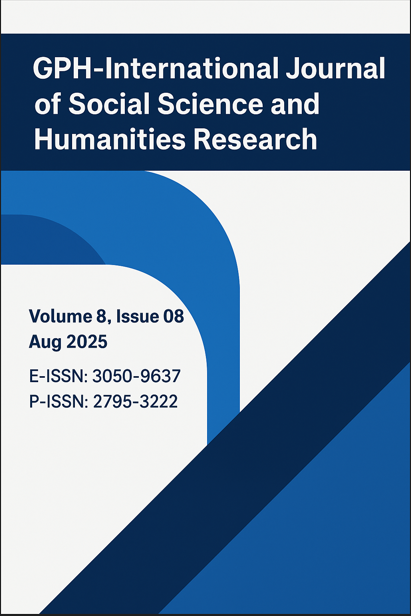EMBODIED WORSHIP: THE THEOLOGICAL AND PASTORAL SIGNIFICANCE OF GESTURES AND POSTURES IN THE CATHOLIC LITURGY
EMBODIED WORSHIP:
Abstract
This article argues that gestures and postures in Catholic liturgy are essential sacramental actions, not mere ceremonial elements. Outward signs instituted by the Church prepare participants to receive grace and embody ecclesial faith. The study analyzes actions such as standing, sitting, kneeling, bowing, genuflecting, making the sign of the cross, participating in processions, and exchanging peace, demonstrating that worship involves both the body and the spirit. Each gesture is rooted in Christ's Paschal Mystery and draws meaning from specific aspects of His passion, death, and resurrection. For example, standing during the Gospel expresses participation in His Resurrection, while kneeling reflects Christ's humility during the Passion. These connections make liturgical actions expressions of Christ's salvific work. Drawing on the General Instruction of the Roman Missal, the Catechism of the Catholic Church, Sacrosanctum Concilium, and relevant scholarship, the article shows that these acts foster reverence, unity, humility, and openness.
However, there are ongoing debates regarding the extent to which embodiment in liturgy should incorporate local cultural expressions without compromising their universal significance. Critics argue that excessive adaptation might lead to superficiality, potentially detracting from intended spiritual engagement and diluting the universal message of the liturgy. Some scholars express concern that certain gestures might risk being reduced to empty rituals rather than meaningful spiritual expressions, questioning their effectiveness in fostering genuine participation. Addressing these critiques, this article maintains that gestures and postures, as sacramentals, are foundational to ecclesial identity, spiritual formation, and active participation in the Church, provided they are approached with intentional theological education and cultural sensitivity.
The article recommends renewed catechetical initiatives to prevent ritualism, promote inclusivity, and enhance the spiritual lives of the faithful across diverse contexts. The main sections address the historical and theological foundations of liturgical gestures, their communal and spiritual dimensions, and catechetical and pastoral implications. Together, these sections provide a comprehensive account of the significance of embodied worship in Catholic liturgy. This study contributes to post-Vatican II liturgical renewal by offering insights into embodied prayer and the relationship between earthly and heavenly worship. It presents practical catechetical and pastoral strategies to address ritualism. For instance, implementing a catechetical program where parishioners engage in workshops that focus on the theological meanings behind liturgical gestures can deepen understanding and participation. Additionally, parish leaders might establish a mentorship system pairing experienced congregants with newcomers to guide them through the liturgical practices and their significance. By integrating theological, biblical, and pastoral perspectives, the article shows that gestures and postures are central to Catholic liturgy and spiritual formation. In doing so, it supports full, conscious, and active participation in the liturgy.
Downloads
References
Baldovin, J. F. (2008). Reforming the liturgy: A response to the critics. Collegeville, MN: Liturgical Press.
Bradshaw, P. F. (2002). The search for the origins of Christian worship. Oxford: Oxford University Press.
Bugnini, A. (1990). The reform of the liturgy: 1948–1975. Collegeville, MN: Liturgical Press.
Catechism of the Catholic Church. (1994). Vatican City: Libreria Editrice Vaticana.
Chauvet, L.-M. (1995). Symbol and sacrament: A sacramental reinterpretation of Christian existence. Collegeville, MN: Liturgical Press.
Congregation for Divine Worship (2011). General instruction of the Roman Missal. Washington, DC: USCCB.
Fagerberg, D. W. (2004). Theologia prima: What is liturgical theology? Chicago, IL: Hillenbrand Books.
Guardini, R. (1998). Sacred signs. St. Louis, MO: Pio Decimo Press.
Johnson, M. E. (2011). The rites of Christian initiation: Their evolution and interpretation. Collegeville, MN: Liturgical Press.
Kavanagh, A. (1992). On liturgy and culture. Collegeville, MN: Liturgical Press.
Martos, J. (2011). Doors to the sacred: A historical introduction to sacraments in the Catholic Church. Liguori, MO: Liguori Publications.
Merleau-Ponty, M. (1962). Phenomenology of perception. London: Routledge & Kegan Paul.
Pecklers, K. F. (2003). Dynamic equivalence: The liturgical translations prepared by ICEL. Collegeville, MN: Liturgical Press.
Ratzinger, J. (2000). The spirit of the liturgy. San Francisco, CA: Ignatius Press.
Schmemann, A. (1973). For the life of the world: Sacraments and orthodoxy. Crestwood, NY: St. Vladimir’s Seminary Press.
Second Vatican Council. (1963). Sacrosanctum Concilium. Vatican City: Libreria Editrice Vaticana.
Turner, V. (1969). The ritual process: Structure and anti-structure. Chicago, IL: Aldine Publishing.
The authors and co-authors warrant that the article is their original work, does not infringe any copyright, and has not been published elsewhere. By submitting the article to GPH-International Journal of Social Science and Humanities Research, the authors agree that the journal has the right to retract or remove the article in case of proven ethical misconduct.














 Firozpur Jhirka, Haryana, India
Firozpur Jhirka, Haryana, India

